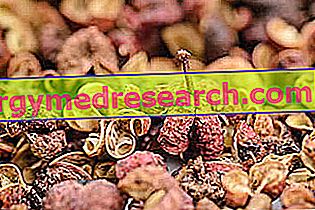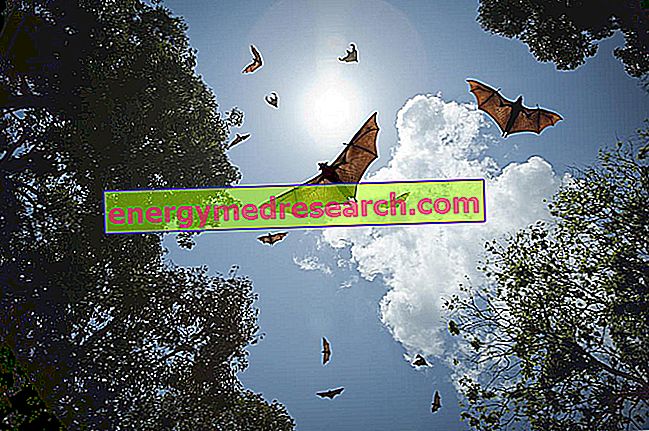Even if we don't often think about it, our liver is a unique organ in terms of importance and number.
His countless functions have earned him the nickname of a generous body par excellence. For this reason it is very important to keep it as healthy and functioning as possible, even through a correct diet.
The Enemy of the Liver diet
It sometimes happens that a slight pain in the upper right part of the abdomen reminds us of the importance of the liver and the risk that it may pay the consequences of a wrong diet.

Role of Fats and Overweight
The excess of lipids, especially the saturated and hydrogenated ones, overloads the hepatobiliary system disturbing the functional balance of the liver. When high temperatures are reached during cooking, the condiments (oil or butter) undergo significant alterations and give rise to toxic substances that contribute to weighing down the liver (see: frying oils).
Overweight, hypercholesterolemia, diabetes and obesity are conditions that facilitate the onset of liver problems. In addition to not exceeding the consumption of fat it is very important to keep the total calories brought by the diet under control and to limit the consumption of sugars (sweeteners, ice creams, confectionery products and sugary drinks).
Role of Alcohol and Nervini
Also alcohol and alkaloids contained for example in coffee (caffeine) the (teina), chocolate (theobromine) contribute, especially if taken at high doses, to fatigue the liver.
Role of Proteins
Eccezzion made for particularly serious cases where the same doctor imposes a hypoproteic diet, it is not necessary to reduce the protein intake below the recommended values for the normal population. However, it is also important to consume plant-derived proteins (legumes) while benefiting from the high soluble fiber content typical of this class of food (soluble fiber interferes with the absorption of some macronutrients, reducing blood cholesterol levels and decreasing the risk of cardiovascular diseases).
Except in special cases (patients with decompensated liver cirrhosis and high levels of ammonia), proteins must neither be abolished nor reduced. If dietary restrictions are necessary, it is good to favor vegetable and legume proteins, while among animal ones, it is good to prefer milk, fish and low-fat cheese proteins.
Diet and Liver Calculations
The existence of an absolute relationship between a high-fat diet and the formation of gallbladder stones has not yet been demonstrated; if anything, the opposite was seen, with a higher incidence of gall bladder stones in ill-fed patients.
For the same reason, there are no special dietary precautions able to prevent the formation of stones. In general, however, it is advisable to use common sense, following a healthy and balanced diet (to learn more, read the article: Diet and Liver Calculations).
The Liver-Friendly Diet
If the diet has taken a bad turn, it is still possible to restore lost health to your liver through a purifying diet.
There are also foods and natural supplements that can stimulate liver function; artichoke, boldo and milk thistle promote, for example, liver function, favoring bile secretion and consequently improving the health of the liver and intestines.
Liver friendly food | Enemy foods of the liver |
Consume fresh fruit and vegetables in large quantities; eat yellow, orange, purple, white and red vegetables: liver-friendly substances are associated with each color, such as fiber, antioxidant vitamins and phytochemicals (see: color diet). The fibers limit the absorption of toxic substances, facilitating their evacuation with feces. The fibers (prebiotics), together with yogurt and especially probiotics, improve the efficacy of the intestinal mucosa, which is an effective filter that, when it works well, is permeable to nutrients but does not allow the passage of toxins. Eat foods rich in glutathione or that favor the production of glutathione: asparagus, watermelon and broccoli are good sources of glutathione, as well as papaya, sulfur amino acids and avocado favor its production. Bitter foods like dandelion, artichoke, milk thistle, mustard, romaine lettuce and broccoli help in liver cleansing. Drink plenty of water (2 to 3 liters a day) because it helps the kidneys expel toxins from the liver. Fish is a good source of Omega-3s, which have a powerful anti-inflammatory activity, and selenium, an excellent antioxidant that helps the liver in detoxification processes. When cooking, cook for little or just enough, never overdone. | Foods rich in saturated fats, such as sausages, cold cuts, pancetta, butter, cheese, whole milk and eggs (yolk). Other foods to avoid are fries, because during the cooking process at high temperatures toxic substances are produced, such as acrylamide. Dangerous fried liver and salty snacks are therefore dangerous foods for the liver. Limit refined foods like sweets, sugar, white rice, cakes, sweets and sweets of all kinds. The liver would indeed be heavily engaged in metabolizing the excess of simple sugars. Abundant meals overload the liver with work. Minimize the consumption of alcohol (no more than a glass of wine or a can of beer per day for women, up to twice for men), smoking, both active and passive, and avoid food rich in preservatives dangerous, such as nitrites present in cured meats and preserved meats. Moderate the consumption of coffee and chocolate. Limit consumption of high-calorie, high-fat foods; all this facilitates the maintenance of an optimal weight and removes the risk of steatosis, that is the excessive accumulation of triglycerides in the liver, a condition typically associated with obesity. |
Fatty liver diet
Liver and healthy eating



